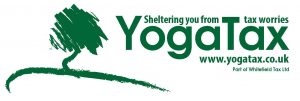A recap on who, what and when to help with 2017-18 SA tax returns.
Scottish income tax is paid if the taxpayer lives in Scotland. It’s paid to the Scottish government. This sounds straightforward but the devil is in the detail.
Who pays Scottish income tax?
For most, the issue will be quite straightforward in that you pay Scottish income tax if you live in Scotland. However, there are some other factors to consider.
You may also pay Scottish income tax if you:
- move to or from Scotland – Scottish Income Tax applies if you move to Scotland and live there for more than half the tax year. HMRC must be informed of the new address of the move to or from Scotland. Otherwise tax may be paid at the wrong rate. The new rate payable will be backdated to the start of the tax year (6 April) of the move. The tax taken from wages or pension will be adjusted automatically so the correct amount is payable across the whole year.
- live in a home in Scotland and one elsewhere in the UK, for example for work.
This is where the details get complicated. The main home is usually where the taxpayer lives and spends most of their time. It doesn’t matter whether they own it, rent it or live in it for free. But to complicate matters, the main home may be the home where less time is actually spent if that’s where:
- most of their possessions are
- the family lives, if married or in a civil partnership
- the person is registered for things like a bank account, GP or car insurance
- the taxpayer is a member of clubs or societies.
An example of this is if you live away because of your work, for example a lorry driver, an offshore worker or in the armed forces. The taxpayer should contact HMRC to change which home counts as your main one.
Doubts about which is the main home?
HMRC has detailed information about working out which is the main home, including issues like students, mobile workers, no permanent residence, traveling etc
What are the tax rates?
The tax rates for 2017-18 and 2018-19 are as follows:
2017-18 tax year
| Band | Taxable income | Scottish tax rate |
| Personal allowance | Up to £11,500 | 0% |
| Basic rate | £11,501 to £43,000 | 20% |
| Higher rate | £43,001 to £150,000 | 40% |
| Additional rate | over £150,000 | 45% |
2018-19 tax year
| Band | Taxable income | Scottish tax rate |
| Personal allowance | Up to £11,850 | 0% |
| Starter rate | £11,850 to £13,850 | 19% |
| Basic rate | £13,851 to £24,000 | 20% |
| Intermediate rate | £24,001 to £43,430 | 21% |
| Higher rate | £43,431 to £150,000 | 41% |
| Top rate | over £150,000 | 46% |
Scottish income tax applies to your wages, pension and most other taxable income. You’ll pay the same tax as the rest of the UK on dividends and savings interest.
The table shows the rates payable in each band if you have a standard personal allowance. You don’t get a personal allowance if top rate tax is payable. This means that currently the allowance is zero if the income is £123,700 or above.
On 12 December 2018 the Scottish government announced the following income tax rates and bands for 2019-20 in the Scottish Budget 2019-20. These will be considered by the Scottish Parliament, and an agreed Scottish Rate Resolution will set the Scottish income tax rates and bands for the tax year 2019-20:
| Bands | Band name | Rate |
| Over £12,500-£14,549 | Starter Rate | 19% |
| Over £14,549-£24,944 | Scottish Basic Rate | 20% |
| Over £24,944-£43,430 | Intermediate Rate | 21% |
| Over £43,430-£150,000 | Higher Rate | 41% |
| Above £150,000 | Top Rate | 46% |
How is Scottish income tax paid?
If you’re employed or get a pension, your tax code will start with an ‘S’. This tells your employer or pension provider to deduct tax at the Scottish rate. Your tax code will be S1185L (2018-19) if you pay Scottish income tax and get the standard Personal Allowance.
If you fill in an online Self Assessment tax return, there’s a box for you to tell HMRC that you pay Scottish income tax.
Article from ACCA In Practice


